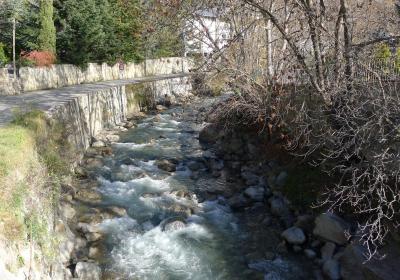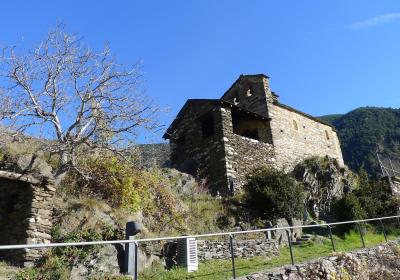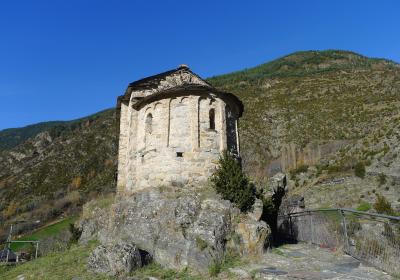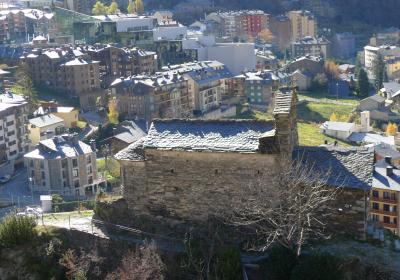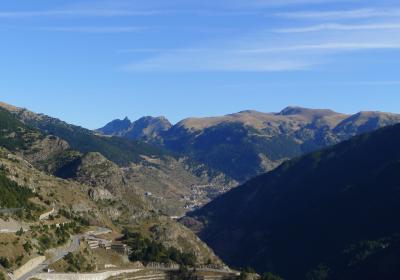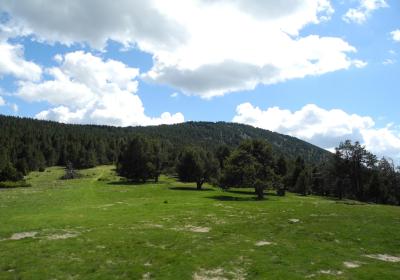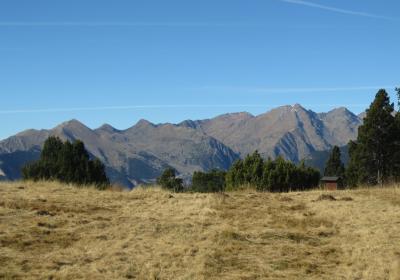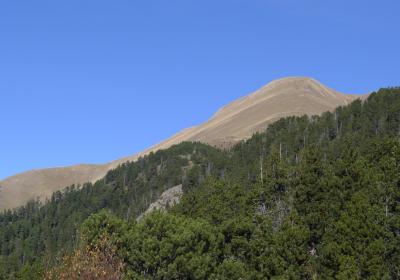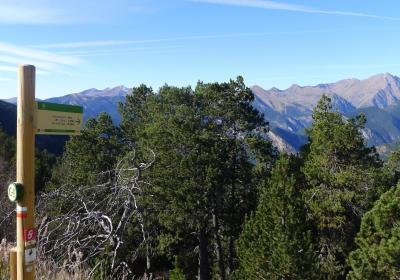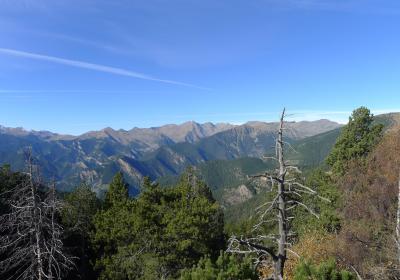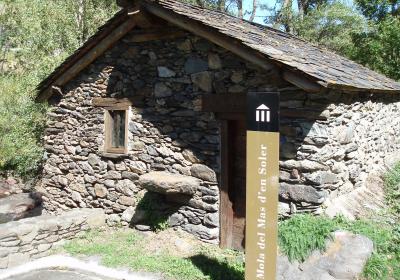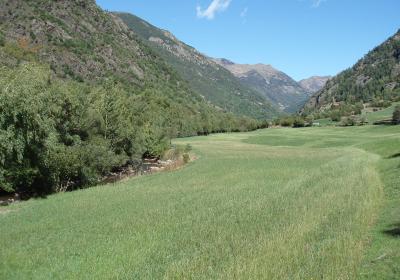The fifteenth stage of the Trans-Pyrenees Crossing leads to the river valley of Valira d'Orient until reaching the river valley of Valira del Nord. Ordino Hill, which connects the two valleys, is the main character in the first part of the stage: from Encamp you will have to ascend 700m in altitude in just over 4 km to reach the hill. Then the GR 11 begins a long descent to La Cortinada, where you will join the route of Ruta del Ferro which you will follow until reaching the small town of Arans.
Considerable. Derived from the length and ascent to overcome. This stage does not have any technical difficulties.
In winter you could encounter snow at Ordino Hill.
No special equipment required.
Andorra. 1:50.000. Editorial Alpina.
Let's start the 15th stage of the Trans-Pyrenees Crossing in the town of (1) d'Encamp (0:00 - 1,270m). During the first four kilometres of the stage you will have to ascend a height of more than 700m to Ordino. Leave Encamp to the extreme NE and cross the historic hamlet of Les Bons. Pass the beautiful Romanesque chapel of Sant Romà de les Bons and through the ancient ruins of the fortified tower. You can go up the tower with the metal stairs. From the top of the tower you can enjoy good views of Encamp.
The climb is hard and relentless. You will alternate some open areas and some stretches with trees along the way. In some places the path zigzags to make the climb easier. After a strong 3 km climb, once you have reached an altitude of 1940m above sea level, the slope becomes smoother and you advance on terrain that is quite flat and comfortable through the interior of the forest. Now you will flank Bony de les Neres and slowly turn to the left (W). Keep on going and you will reach (2) Ordino Hill (2:00 - 1,983m), the highest point of the stage. This hill connects with the river valley of Valira d'Orient, where we came from, and the river valley of Valira del Nord, where you are headed now. The extent of the hill allows for enjoying good view in all directions and easily distinguishes some of the great mountains of Andorra: Comapedrosa to the west (2,939m), to the north the three peaks of Casamanya (2,749m), Alt del Griu to the south east (2.879m),...
You will cross the road and began the descent into the Ordino Valley. You will descend into a wooded and shady area. During this next stage you must pay attention to the direction: you will change directions several times, alternating paths and tracks. You will go down through the Segudet Ravine until reaching an altitude of 1360m, a point where this ravine confluences with the Casamanya Stream and where you will get moving on a wide track. Towards the left (W) you could descend to Ordino. However, take the track leading up to the right (NW). This initial track climbs the ravine of the Casamanya Stream, winding considerably, and then we will flank Sorobilles Peak (1,846m) and the hill of Rodó (1,888m).
Then you will go up the river valley of Nord halfway and towards the NW. Close to La Cortinada the path descends towards the valley with zigzags. You will cross the town of (3) La Cortinada (4:30 - 1,355m) and walk until stopping at the road. Pass the beautiful chapel of Sant Martí de la Cortinada and after a bend to the right, leave the road and cross the Valira River on a stone bridge. Now take the path the runs on the so-called Ruta del Ferro between Llorts and La Cortinada. Advance along the river until reaching (4) Arans (4:45 - 1,355m).
Climbing up Ordino Hill and admiring the mountains of Andorra from this point.
Walking from valley to valley: from Valira d'Orient to Valira del Nord.
Discovering the mining past of the Ordino Valley following the Ruta del Ferro.
Ironwork was one of the most important economic activities in Andorra from the 17th century until the late 19th century? The Ruta del Ferro route between Llorts and La Cortinada allows you to discover the different sites related to this steel tradition: the mine in Llorts, the path of the carriers, Rossell Forge, etc.
The Romanesque church of Sant Romà de les Bons. This 12th century church is located at the top of the medieval village of Les Bons. It stands out especially due to its barrel vault, an exceptional case in Andorran Romanesque. Inside the church you can see a copy of the original Romanesque paintings, which are kept at the MNAC (National Art Museum of Catalonia).
The next day's stage (stage 16) will require an overnight stay in an open shelter (Baiau Refuge). Therefore, you will have to buy the needed supplies for the next day.

